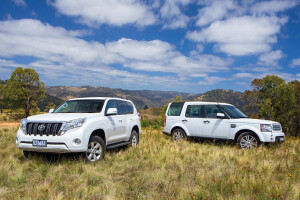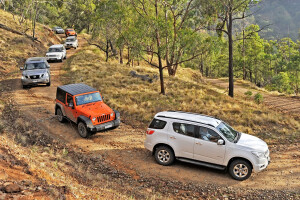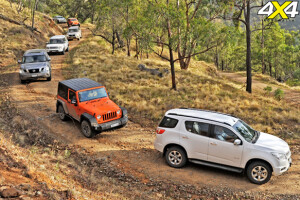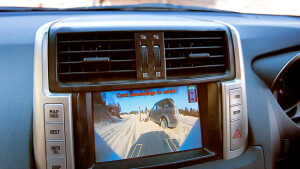Latest Review
.jpg)
2015-2017 Land Rover Discovery Review
The Discovery is a superb seven-seat all-surface tourer, combining formidable 4WD ability with smooth performance. This review covers Discoveries on sale prior to August 2017.
What stands out?
The Land Rover Discovery is unusual among 4WD vehicles because its formidable ability on rough tracks does not compromise its comfort and handling on smooth roads. You can choose from two powerful but frugal diesel engines. A roomy and versatile seven-seat cabin tops off a very impressive package.
This review covers Discoveries on sale prior to August 2017, when this car was replaced with a new-generation Discovery.
What might bug me?
Travelling for service and spare parts: Land Rover’s dealer network is sparse outside the major cities.
Packing spare fuel when touring remote areas. Some alternative vehicles have much bigger fuel tanks.
Your narrow choice of off-road oriented replacement tyres. Not many fit the 19-inch wheels that come standard on a Discovery.
What body styles are there?
Only one, a four-door wagon with a two-piece, horizontally split tailgate. All models are available with up to seven seats.
All Discoveries drive all four wheels at all times, and have low-range gearing, which makes it easier to drive very slowly in difficult off-road conditions.
The Discovery is classed as a large SUV, higher priced.
What features do all versions have?
Bluetooth phone connectivity, USB and auxiliary audio input jacks, cruise control, and foglights.
Push-button start, which works whenever the key is inside the car, perhaps in a pocket or bag.
Dual-zone climate control, where the driver and front-seat passenger can individually set their desired cabin temperatures.
Rear-parking sensors, which tell you how close you are to obstacles behind the car.
Windscreen wipers that come on automatically when it rains.
Daytime running lamps, which help make the car more visible (especially on overcast days).
Height-adjustable air suspension, which lets you raise the car for off-road use and then lower it again for on-road use. (You can also lock it in an extra-low position, which helps when negotiating low-roofed car parks.)
Eight airbags: two in front of the driver and front passenger; side airbags to protect the upper body of the driver and front passenger; front curtain airbags to protect the heads of the driver and front passenger; and rear curtain airbags to protect the heads of the outside passengers in the second-row seat.
Electronic Traction Control, which helps you go further in difficult off-road conditions.
Electronic Stability Control, which helps control the vehicle in a skid. All new cars must have this feature.
Active Roll Mitigation, which helps prevent the vehicle from rolling over.
Hill-descent control, which stops the car from running away on steep downhills off-road. Hill-Start Assist, which prevents the car from rolling back when you start from rest on steep hills.
Trailer-Sway Control, which helps settle the vehicle if the trailer you are towing is swaying from side to side. A tow-bar hitch receiver, and a connection for the trailer electrics. (A towbar tongue is a dealer-fit accessory.)
Terrain Response, which lets you select the off-road surface you want to drive on (sand, for example), and automatically adjusts the traction control, stability control and other systems to suit that surface.
Wheels (of 19-inch diameter) made from aluminium alloy, which look nicer than steel wheels. A full-size spare wheel and tyre.
All Discoveries come with a three-year, 100,000km warranty. The warranty includes 24-hour roadside assistance, even on roads that only a 4WD vehicle can travel. Additionally, the bodywork is covered for corrosion for six years.
Which engine uses least fuel, and why wouldn't I choose it?
Two engines are available in a Discovery, both of them turbocharged diesels. Each consumes 8.8 litres/100km on the official test (city and country combined).
In the real world, the less powerful of these diesels, the TDV6, uses less fuel than the other, and it averages about 11 litres/100km.
This is the only engine available with the least costly Discovery, also named the TDV6. And it comes in no other model.
It is an excellent engine, with more than enough power in most driving conditions. The main reason you would not choose it is that you want more equipment in a Discovery.
The more powerful diesel, the SDV6, comes in both of the more expensive Discoveries, the SE and HSE models. It averages about 12 litres/100km in real-world driving. (Your consumption will depend on your driving style and driving conditions.)
The two engines are the same mechanically, both 3.0-litre V6 bi-turbo diesels. They perform differently because they have been tuned differently.
All Discoveries come with a sophisticated eight-speed automatic gearbox.
What key features do I get if I spend more?
Stepping past the TDV6 and spending more for a Discovery SE gets you leather seat trim, power-adjustable front seats, and a standard third row of seats (bringing the number of seats up to seven). You also get a reversing camera, a better sounding audio system with more speakers, and LED-strip daytime running lamps.
With the exception of powered seat-adjustment, these features are also available on the TDV6 as extra-cost options.
Spending more again on an HSE brings you front parking sensors, which help you judge the distance to obstacles immediately in front. The driver’s seat and external mirrors remember your adjustments, so that you can restore your settings after a companion has driven the car. And there is satellite navigation, which has hard-disk memory that can be updated with new maps.
The front parking sensors and satellite navigation are available as options on the other models.
Many other options are available for all or most models.
You can order a sunroof and sportier-looking 20-inch wheels for any Discovery.
Safety options for all Discoveries include Blind-Spot Monitoring (which alerts you when changing lanes if another vehicle is alongside out of view), and rear cross-path detection (which warns, when you are reversing, of vehicles approaching from either side).
Off-road options for all Discoveries include an automatic locking rear differential, which helps the car go further in difficult conditions.
You can also option Wade Sensing, which tells you if water you are entering is too deep. And any Discovery can be ordered with exterior cameras that give you a ‘wheels-eye’ view around the car – these can help in off-road driving.
The Discovery SE and HSE can be optioned with rear-seat DVD screens, digital TV and a high-end 17-speaker audio system.
On these vehicles you can also add Adaptive Cruise Control, which automatically matches your speed to a slower car in front. As well, it warns you if you are closing too fast on another vehicle.
And you can have headlamps that switch on automatically when it gets dark, and dip the high beam automatically for oncoming traffic.
Does any upgrade have a down side?
Tyres fitted to the optional 20-inch wheels don’t perform as well off-road and are generally more susceptible to damage, especially off road. Also, the ride on rough roads is not as comfortable with the 20-inch wheels as it is with the standard 19s.
Only white paint is available without paying extra.
How comfortable is it?
The Discovery has a very spacious and particularly comfortable cabin. Highlights are superb seats and great vision.
All the major controls are easy to use. Minor controls are many, given the extra 4WD functions, but they are arranged logically. This is a vehicle in which you quickly feel at home.
On the road the Discovery is easy to drive, quiet and comfortable. It has the refined and polished feel of a luxury car.
For general driving, both the diesels are equally effortless and will do what you want with only light pressure on the accelerator. The automatic gearbox always finds exactly the right gear at the right time.
The Discovery does not feel as big or as cumbersome as most other big 4WDs.
What about safety?
The Discovery TDV6 rates as Very Good for safety. The SE and HSE, which come with a reversing camera as standard, rate as Excellent.
The Australasian New Car Assessment Program has not rated the Discovery. The previous Discovery 3 was rated at four stars for safety, from a maximum of five, in December 2006.
I like driving - will I enjoy this car?
A large 4WD family wagon has no right to steer and handle as well as the Discovery. Yes, it’s still a very big and heavy car. But on the road it feels sporty and nimble compared with alternatives that have similar off-road ability, such as the Toyota LandCruiser Prado and LandCruiser 200.
The height-adjustable suspension works well here. The low on-road ride height helps stability, and yet you can still jack up the car for off-road use.
The Discovery is also formidably capable off road. If you want to maximise its off-road potential, however, you should order the optional self-locking rear differential.
The more powerful of the two diesel engines, the SDV6, comes into its own on the open road, where it will overtake more quickly and climb very steep hills faster than the TDV6 diesel. It also handles heavy towing loads more easily.
That said, the less powerful TDV6 is also an effortless performer and for most driving it doesn’t give up anything to the more powerful diesel.
How is life in the rear seats?
The second row seat is broad and comfortable, and will accommodate three adults with ease. The third seat row betters all similar vehicles in as much as it can accommodate big adults, and not only children or small adults.
The ability to lower the vehicle, on the adjustable suspension, is also handy for helping people get in and out.
How is it for carrying stuff?
The Discovery is excellent for carrying stuff, thanks to its space-efficient box-like body. It has a cavernous load space, and the middle and third-row seats fold to provide a completely flat floor. The second and third row seats also fold individually, so that the load space can be tailored to what you are carrying.
The Discovery also has a class-leading 3500kg tow rating, which means you can tow a two-horse float, a large boat, or a large dual-axle caravan with capacity to spare. The Discovery tows heavy weights well, thanks to its stable chassis and powerful engines, and is one of the best tow vehicles around.
Where is it made?
All Discoveries are made in the United Kingdom.
What might I miss that similar cars have?
More practical wheel and tyre combinations for off-road use. The Toyota LandCruiser Prado, Toyota LandCruiser 200 Series, Ford Everest and Jeep Grand Cherokee all offer these.
A bigger fuel tank, for a longer range, would be helpful when touring remote areas. A diesel Discovery will travel about 700km on a tank. The LandCruiser Prado and 200 Series have considerably bigger fuel tanks: diesel 200s will do about 1000km on a tank, and diesel Prados 1400km.
Head-protecting curtain airbags for passengers in the third-row seats. LandCruiser 200s and Ford Everests have these, for example.
The ability to display apps from your smartphone on the touchscreen and control them from there, via Apple CarPlay or Android Auto. Most Everests offer this, for example.
Automatic emergency braking. The best equipped LandCruiser 200, Prado and Jeep Grand Cherokee models offer this.
The lighter and smaller Grand Cherokee also handles more like a car, when you are driving on normal roads.
Other cars you might consider include the Mitsubishi Pajero and the Nissan Patrol.
I like this car, but I can't choose which version. Can you help?
The Discovery TDV6 offers the best value, and can be upgraded selectively with just about all of the features that come standard on the more expensive models. This allows you to tailor your Discovery to your needs, without paying for features you don’t want.
When did Land Rover update this Discovery?
The Discovery reviewed here is the vehicle previously called the Discovery 4, which in turn was based heavily on the Discovery 3 that arrived in Australia in 2005. A supercharged V6 petrol version was dropped in 2016.
Production ceased about November 2016, and by April 2017 few remained on sale new.
An all-new Discovery arrived in August 2017. It was considerably lighter, with monocoque construction, fresh styling, four and six-cylinder diesel engines, and auto emergency braking.
Score breakdown
Things we like
- Excellent on and off road
- Roomy cabin
Not so much
- Off-road tyre options scanty
News
-
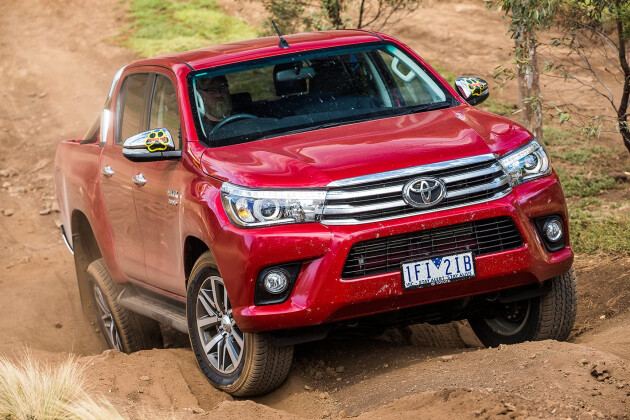 Advice
Advice2016 3500kg tow rating vehicles
There’s nothing Australian’s love more than travelling around Australia with a camper trailer, caravan or boat in tow. Here are all the vehicles with a tow rating above 3500kg for those times you need to drag the heavy stuff.
-
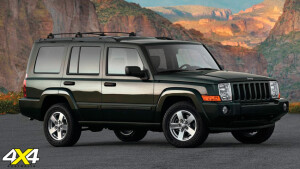 News
NewsJeep to revive Grand Wagoneer
All signs point to Jeep reviving one of its most iconic nameplates while plugging a major gap in its product range with a luxurious seven-seater.
-
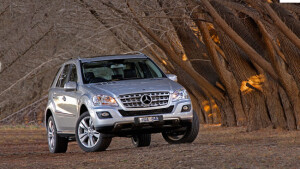 News
NewsAustralia's 20 best-selling dual-range 4x4s
They are Australia’s 20 best-selling dual-range 4X4s - but are they all worth your hard-earned dollar?
-
 Features
FeaturesDiscovery 4
New Land Rover Disco sheds some of its tough exterior.


